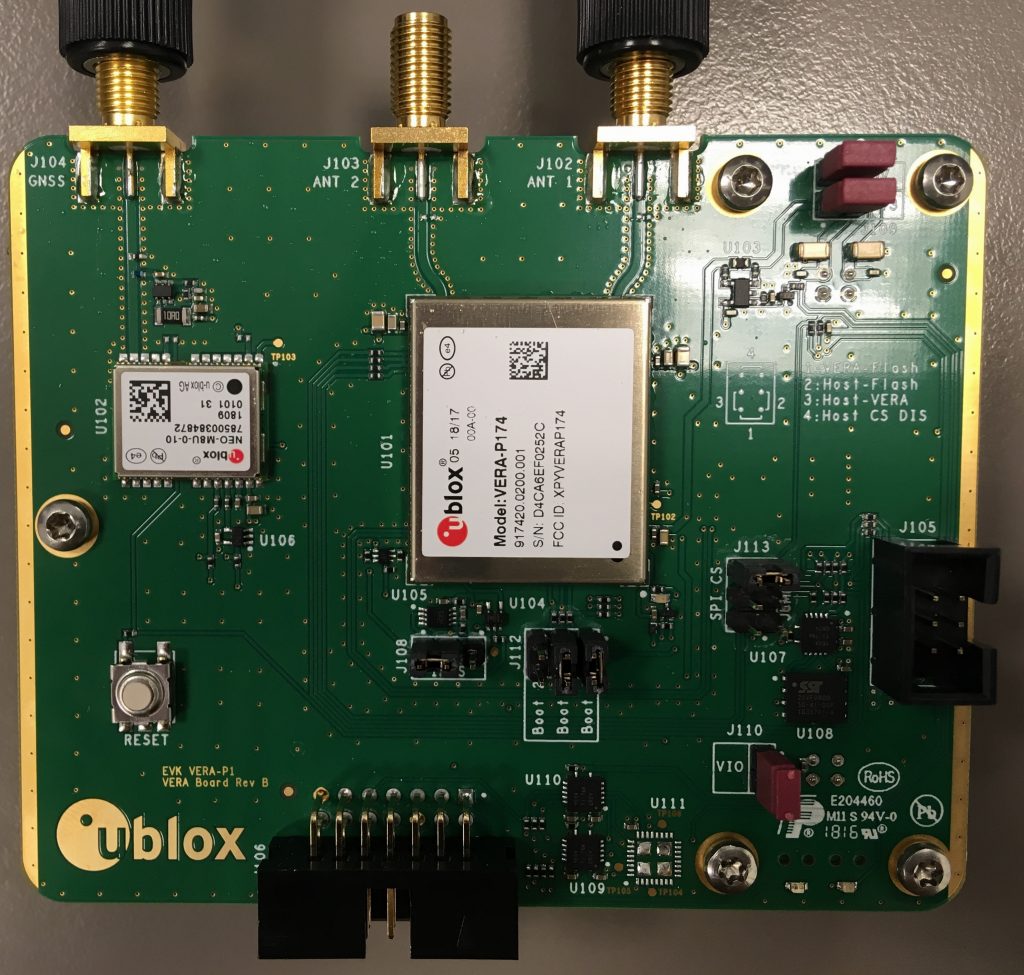In the four previous posts we described the process of developing Iseauto. Now it is time to look how Iseauto is part of IoT. Therefore, in this post we are considering it as self-driving vehicle, thus the following describes any kind of self-driving vehicle. So, the IoT is network of devices connected via Internet, where the devices communicate both with other devices as well as users in order to to perform the designated task. In the scope of this report we look more closely with whom or what self-driving vehicles are communicating as well as what are the benefits.
Traffic environment includes many different objects. For instance, traffic lights, signs, crosswalks, lines separating the lanes etc. It is a constant monitoring of the traffic conditions for the driver in order to obtain the necessary information for driving. Of course experience has important part in traffic when assessing the change in traffic lights or whether it is safe to pass the junction or not. Most of the traffic lights are programmed to change the light with certain delay, however some lights, like the ones used for crosswalks, have more flexible delay cycle that reacts to push buttons. Let us assume that Iseauto is able to obtain traffic light changing information via Internet before reaching the crossroad. This creates a situation where Iseauto could plan the route so that it reaches the crossroad exactly when the lights go green. In this way the driving becomes more steady that in turn makes the traffic more safer. This also adds the benefit of reducing energy consumption as less acceleration is needed. On the other hand, self-driving vehicles could transmit both location as well as route information to the traffic management system in order to control the traffic lights so that vehicles could pass more effectively. This is only but a single example for making traffic more safe as well as more energy efficient by communicating with various traffic objects.

In addition to communication with static traffic objects, like traffic signs, lights etc, the self-driving vehicles (and perhaps also the man operated vehicles) could exchange information between themselves. Communication could take place in the same way as the popular navigation application Waze. Various traffic information is shared with other users, like dangers, accidents etc. Unlike humans the self-driving vehicle could transfer the traffic information into the centralized environment without ever losing track of the traffic thus reducing traffic hazards. For human it takes several seconds to note Waze about traffic situation, for the computer in self-driving vehicle only fraction of a second. Those couple of seconds, spent on making a note in Waze, could become crucial in order to avoid serious accident with casualties. Another important part of information sharing by self-driving vehicle is data gathered from on-board sensors. For example LIDAR outputs a local point cloud (simply put it is a local map) that could be uploaded to database for reuse by other self-driving vehicles in the future in the same area. This enables other self-driving vehicles to adjust quickly with the environment. As a conclusion the more self-driving vehicles in the traffic that share their local maps the bigger the area where all self-driving vehicles can manage more easily. Also more up to date information is available in the database. To sum up the previous discussion we can say that via communication between the self-driving vehicles both the traffic safety as well general management in difficult traffic situation could be improved.

When up until here we have described the activities that are directly linked with controlling self-driving vehicles, then having a direct Internet connection on board self-driving vehicles add some more benefits. For instance the vehicle could download and update it’s software autonomously. When a company hosts hundreds or even thousands of self-driving vehicles that take part in everyday traffic it is best that they run on the latest software (that is considered the best). In addition to self-driving software updates for example Iseauto could gain access to rector Jaak Aaviksoo personal calendar and be ready to transport him in time to some other campus building. We can also add communication with some household devices like coffee machine that receives information about homecoming time in order to make a fresh cup of coffee when stepping in the door. For the previous examples include both security as well as comfortability that self-driving vehicles could offer. Also the self-driving vehicle users are relieved from several common doings thus should have a rise in life quality.

Lastly, we should look at the communication between self-driving car and the user. In the previous chapter we already mentioned that self-driving vehicle could be in the right place by accessing information from the user’s calendar. However, peoples plans change often and not always the calendar does not have relevant information. Therefore the user could inform the vehicle to get him, regardless of the time. Nowadays, most of the workplaces are in downtown skyscrapers and often the there is not much space for parking and the cost for parking is high. So the self-driving vehicle could drive a bit away from the downtown after bringing the user to work and come back when the user send the request. Today this kind of information exchange with user is not feasible without Internet connection.
Everything we discussed is just a small example of the possibilities that self-driving vehicles presents as a part of the IoT. We can only wonder what kind of possibilities exist. The most important goals for self-driving vehicles in part of our everyday life are increasing the traffic safety and rising the life quality. As IoT and self-driving vehicles are part of rapidly developing field we can only wait what kind of interesting solutions are available for us in the future by the self-driving vehicles.

